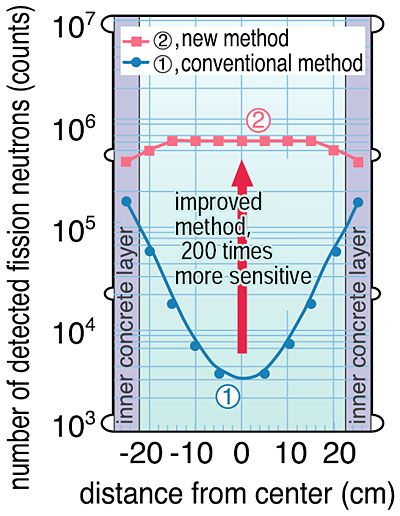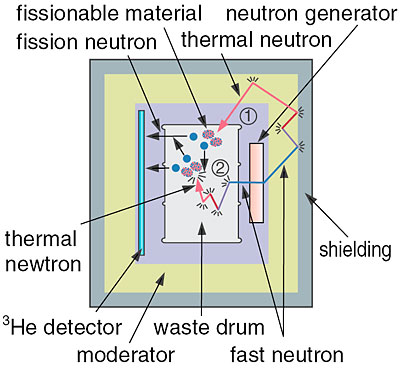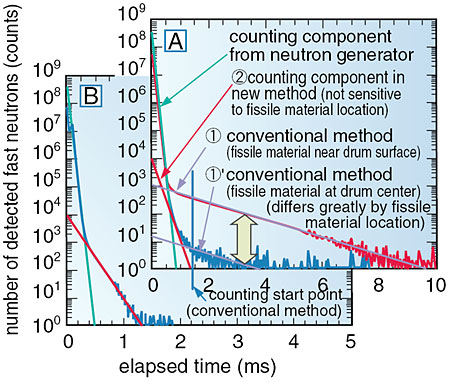The conventional nondestructive measurement method to detect fissile material in a waste drum is known as an active neutron measuring method. However, the detection sensitivity is greatly influenced by the location of nuclear material in the waste matrix within a drum, as shown as (1) in Fig. 3-3. Threfore, the amount of fissile material cannot be determined by the method unless the location of nuclear material is known. Moreover, high sensitivity measurements are not possible even if the location is known, because the detection sensitivity of the drum is poor at the center. Actually, research organizations in many foreign countries have been unable to solve this problem, and development of an accurate measurement system was abandoned.
However, an advanced theoretical analysis was undertaken using the three-dimensional Monte Carlo transport calculation while performing a detailed analysis of experimental data concerning the location sensitivity in various waste matrices. Consequently, the two kinds of reaction processes, shown in (1) and (2)of Fig. 3-4, were identified. The counting components produced in these reaction processes appear as the sum of the exponential function of the two components, like(1) and (2) in the measured data shown in Fig. 3-5. The counting component of (1) has a large variance depending on its location, while the counting component of (2) has almost the same response, even if the location is changed. Consequently, if an evaluation method of the counting component of (2) behind (1) is established, the quantity can be determined with sufficient accuracy as shown in Fig. 3-3 wherever nuclear material may be located in the waste. When applying this detection method, the measurement sensitivity at the drum center is improved by a quantum leap, and a high sensitivity measurement can be realized.
From this viewpoint, the optimized design of the detection system has been accomplished, and the detection technique of only (2)domain counting components is now possible as shown in part B of Fig. 3-5. By this detecting method, which is named the 14 MeV neutron direct interrogation method, the detection of a minimum 0.017 Bq/g value of concrete solidified uranium (U) waste can be performed by a 10-minute measurement. Therefore, the clearance measurement of U waste and the radioactivity classification measurement of TRU waste are possible, and a significant cost reduction of waste disposal can be expected. Furthermore, since there is no location sensitivity difference, the amount of existing radioactivity can be determined with high precision and the amount existing will be correctly known. This will be extremely useful to waste disposal safety planning. This research for practical use is now underway.
|


